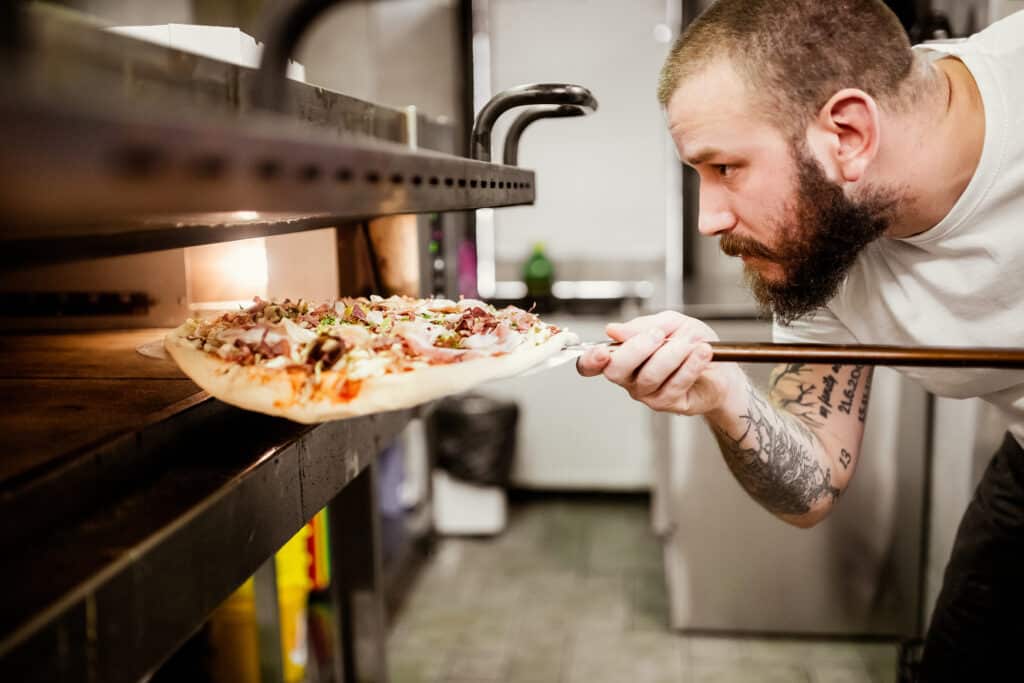Food costs are one of every restaurant’s two most significant expenses, and today it’s more important than ever to develop and implement a focused food cost strategy to ensure growth alongside incredible guest experiences.
Knowing, understanding, and monitoring your food cost percentage, food cost per recipe and serving, are key to improving performance and profit margins. Insights into food costs can help you better understand your restaurant group’s budget and drive your menu pricing strategy and inventory controls across all locations. It helps you make data-driven decisions to maximize your profits. You may already have systems in place for calculating the food cost of an individual dish level and your business overall. Still, given the upheaval in the industry and the greater economy, it’s essential to keep tabs on this critical business metric.
Check out other blogs in this food cost management series
- Learn how to reduce your food cost percentage
- Learn how to calculate recipe costs for your restaurants
- Learn the difference between recipe costing vs. food costing
How to calculate food cost percentage
Your restaurant food cost is also known as your Cost of Goods Sold (CoGS), the total cost of all the ingredients you use to prepare the menu items sold during a given period. Your food cost percentage is this number as a percentage of sales.
Food cost percentage shows the relationship between how much it costs to make a dish and how much profit you make from that dish. You can find your food cost percentage on the store level at each location, comparing your overall inventory CoGS to your sales or on an individual dish level.
Food costing is a powerfully simple tool that requires an integrated, industry-specific Restaurant Enterprise Management platform to generate accurate numbers consistently. Plug your numbers into Restaurant365’s Food Cost Calculator to dive deeper into your numbers, and read on to get behind the numbers.
Consistent, accurate recipe costing is key—recipe costing breaks down menu items with the correct cost for portion sizes and individual ingredients. With up-to-date information about vendor pricing, combined with standardized recipes from your kitchen, your food cost percentage is calculated based on the exact food cost of a dish.
For accurate data, it’s ideal to use inventory management software built for restaurants that easily integrates with your accounting and Point of Sale (POS) system to map inventory against sales. While it is possible to manually calculate food cost percentage, the process is slow, making the finished data outdated and potentially fraught with errors.
If you don’t have automated tools for inventory control and recipe costing, use this formula to calculate your food cost percentage at the store level:

How to Calculate Ideal Food Cost Percentage
You don’t want to calculate your food cost without understanding where it should be (or vice versa). You want to ensure you know where your food cost percentage should ideally be, given your ingredient costs and standardized recipes, while also knowing what number your kitchens are hitting daily.
One of the most powerful tools for food cost percentage is comparing actual vs. theoretical (AvT) food cost. Understanding the difference between your actual inventory and recipe costs and what you planned for quickly reveals the source of unexpected costs and creates opportunities to improve. To calculate your ideal food cost percentage, use your theoretical food cost, the cost of making all menu items over a given period, assuming perfect portion sizes, no waste, no mistakes, and no theft. Your theoretical food cost number as a percentage of sales is your ideal food cost percentage.
Then, you can compare your theoretical to your actual food cost, which is the food cost given your real-time sales and inventory levels. The variance between these numbers can be due to food waste, breakage, or theft.
Any variance represents a leak in your profit margin that is worth examining with your restaurant operations reporting software. While you won’t always hit your ideal food cost, knowing where to look to gain efficiencies is the first step toward closing the gap.
How To Calculate Menu Item Prices
You likely already have a profit margin goal for your restaurant. However, it’s easy to forget that your target profit margin is only possible if you hit your target food cost.
When you understand your food cost, you can make better-informed decisions about your menu. A general rule of thumb in the restaurant industry is to keep food cost percentages around 28 to 32%. Average food cost percentages differ between quick service restaurant concepts and fine dining, as well as in different cities. It may even vary within the same restaurant, changing with the menu for each part of the day.
Your food cost percentage may not be the same with every dish. However, overall, you want to be able to hit your goal food cost percentage. No matter what food cost percentage your restaurant has, keeping this number in mind while pricing out your menu can help you ensure each menu item contributes to your profit margin.
Understanding your food cost will also help you make menu engineering decisions. Knowing your food cost percentage lets you see which menu items are not as profitable, so you can make changes such as raising prices, adjusting ingredients to hit a new food cost percentage, or removing the items from the menu. You can also see which menu items have a low food cost and then promote or feature these items to encourage sales and maximize your margins.
How To Calculate Cost Per Meal (cost per dish)?

Control restaurant inventory to reduce waste
As you begin to examine your food cost, one of the most effective ways to immediately streamline your numbers is to establish standards and procedures for your restaurant inventory management. Remember, your food cost percentage considers all the inventory you use to produce menu items. Thus, if you have high levels of waste, your food cost percentage will be higher.
To optimize your food cost, examine how you can reduce waste throughout your operations. If you are evaluating actual vs. theoretical food costs, start by examining where the largest variances in each of your locations. These gaps are the lowest-hanging fruit. Start with the locations with the widest variances, then drill into the food types with the highest variances. Tools like waste logs can help your store-level managers track what is happening daily in the kitchens. By working with your managers and training kitchen staff, you spot mistakes, spillage, and waste to address the underlying cause of the variances.
Also, make sure that you are implementing a regular inventory process to prevent food waste in the first place. Train your entire team on inventory control, but designate a few key people in charge of making sure it is done regularly. Make it easy for your team by choosing an inventory management platform with easy mobile or tablet access for tracking. Be sure to take inventory regularly, around the same time and day of each time period to ensure consistent data.
Regular inventory management can help you spot common mistakes like over-ordering, incorrect portioning, or not rotating ingredients, ultimately cutting down food waste and inventory costs and helping to improve margins.
Forecast restaurant inventory for uncertainty
Forecasting tools use historical sales to predict what you will need to purchase and prepare for the next comparable sales period. If you have an all-in-one, integrated inventory management solution, you can take advantage of your historical sales data from your restaurant accounting software, combined with your inventory levels, to project what inventory you’ll need for a given time period.
Over-ordering and over-prepping lead to food waste that drives up food costs. You know Mondays and Saturdays will likely have different sales levels, and you can account for this fluctuation. Smart forecasting tools prevent the order from ever taking place.
Conclusion
Annual forecasting and budgets are critical to controlling food costs and pave the way for better margins and continued growth. As you plan for the future, it’s now more important than ever to implement a system that provides the data, reliability, and agility you need to understand your business in real-time and make changes to seize opportunities or manage any challenge.



